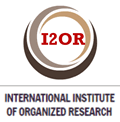Asociación del consumo de frutas y vegetales con marcadores del estrés oxidativo e inflamación en adolescentes cubanos
Resumen
Palabras clave
Referencias
Pasupuleti VR, Arigela CS, Gan SH, Salam SKN, Krishnan KT, Rahman NA, et al. A Review on Oxidative Stress, Diabetic Complications, and the Roles of Honey Polyphenols. Oxid Med Cell Longev. 2020; 2020:8878172.
Mozzini C, Pagani M. Oxidative Stress in Chronic and Age-Related Diseases. Antioxidants. 2022;11(3):52.
Bujtor M, Turner AI, Torres SJ, Esteban-Gonzalo L. Pariante CM, Borsini A. Associations of Dietary Intake on Biological Markers of Inflammation in Children and Adolescents: A Systematic Review. Nutrients. 2021;13(2):356.
Zhang C, Ren W, Li M, Wang W, Sun C, Liu L, et al. Association Between the Children's Dietary Inflammatory Index (C-DII) and Markers of Inflammation and Oxidative Stress Among Children and Adolescents: NHANES 2015-2018. Front Nutr. 2022; 9:894966.
Andreo-López MC, Contreras-Bolívar V, Muñoz-Torres M, García-Fontana B, García-Fontana C. Influence of the Mediterranean Diet on Healthy Aging. Int J Mol Sci. 2023;24(5):4491.
Zhang M, Zhao D, Zhou G, Li C. Dietary Pattern, Gut Microbiota, and Alzheimer's Disease. J Agric Food Chem. 2020;68(46):12800-9.
Aleksandrova K, Koelman L, Rodrigues CE. Dietary patterns and biomarkers of oxidative stress and inflammation: A systematic review of observational and intervention studies. Redox Biol. 2021; 42:101869.
Papadaki A, Nolen-Doerr E, Mantzoros CS. The Effect of the Mediterranean Diet on Metabolic Health: A Systematic Review and Meta-Analysis of Controlled Trials in Adults. Nutrients. 2020;12(11):3342.
Abdul-Aziz S, Gyan Aboagye R, Boadu Frimpong J, Iddrisu H, Ebenezer Agbaglo E, Budu E, et al. Determinants of Fruits and Vegetables Consumption among In-School Adolescents in Ghana. Adolescents. 2021;1(2):199-211.
Başıbüyük GÖ, Ayremlou P, Saeidlou SN, Ay F, Dalkıran A, Simzari W, et al. A comparison of the different anthropometric indices for assessing malnutrition among older people in Turkey: a large population-based screening. J Health Popul Nutr. 2021;40(1):13.
Malesza IJ, Malesza M, Walkowiak J, Mussin N, Walkowiak D, Aringazina R, et al. High-Fat, Western-Style Diet, Systemic Inflammation, and Gut Microbiota: A Narrative Review. Cells. 2021;10(11):3164.
Lakshmi E. Food Consumption Pattern and Body Mass Index of Adolescents − A Descriptive Study. Interl J Nutr, Pharmacol, Neurol Dis. 2021;11(4): 293-7.
Tell MN, Hedin K, Nilsson M, Golsäter M, Lingfors H. Associations between intakes of foods and their relations to overweight/obesity in 16-year-old adolescents. J Nutr Sci. 2022;11: e26.
Hernández-Triana M, Porrata C, Jiménez S, Rodríguez A, Carrillo O, García A, et al. Dietary reference intakes for the cuban population, 2008. MEDICC Rev. 2009;11(4):9-16.
Swann OG, Breslin M, Kilpatrick M, O'Sullivan TA, Mori TA, Beilin LJ, et al. Dietary fibre intake and its association with inflammatory markers in adolescents. Br J Nutr. 2021 ;125(3):329-36.
Citrakesumasari C, Kurniati Y, Virani D. Analysis of Nutrition Intake Based on Gender in Adolescents. Open Access Maced J Med Sci. 2020;8(T2):87-9.
Song S, Ishdorj A, Dave JM. Gender Differences in Nutritional Quality and Consumption of Lunches Brought from Home to School. Int J Environ Res Public Health. 2021;18(24):13168.
Gariballa S, Al-Bluwi GSM, Yasin J. Increased Fruit and Vegetable Consumption Mitigates Oxidative Damage and Associated Inflammatory Response in Obese Subjects Independent of Body Weight Change. Nutrients. 2023;15(7):1638.
Madej D, Granda D, Sicinska E, Kaluza J. Influence of Fruit and Vegetable Consumption on Antioxidant Status and Semen Quality: A Cross-Sectional Study in Adult Men. Front Nutr. 2021; 8:753843.
Lou A, Wang L, Lai W, Zhu D, Wu W, Wang Z, et al. Advanced oxidation protein products induce inflammatory responses and invasive behaviour in fibroblast-like synoviocytes via the RAGE-NF-κB pathway. Bone Joint Res. 2021;10(4):259-68.
Enlaces refback
- No hay ningún enlace refback.
Copyright (c) 2024 MULTIMED

Esta obra está bajo una licencia de Creative Commons Reconocimiento-NoComercial-CompartirIgual 4.0 Internacional.











